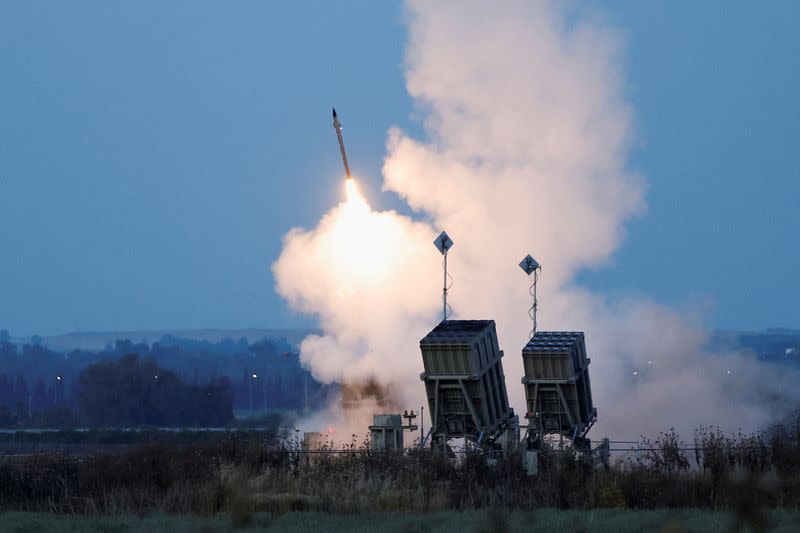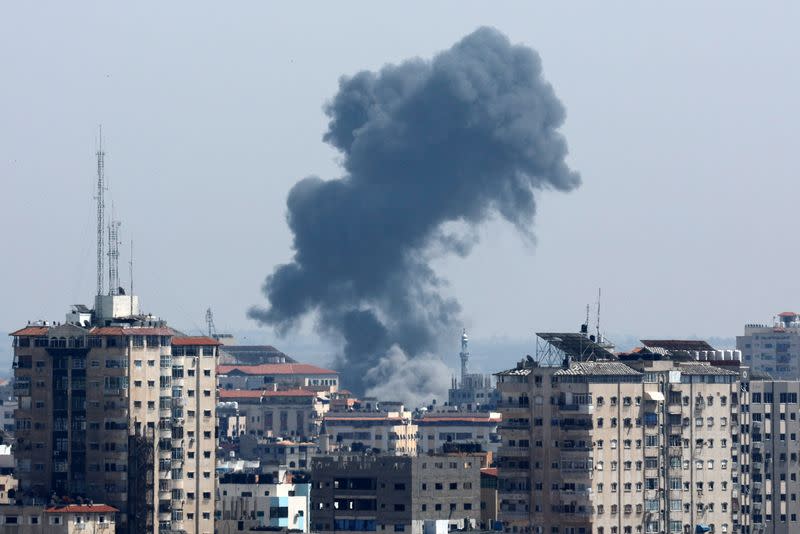FACTBOX-Israel's Iron Dome missile defence system
(Reuters) - Israel's short-range Iron Dome air defence system has had a 96% success rate in intercepting rockets fired from Gaza during the latest round of fighting between Israel and Palestinian factions, the military said.
Here are some details on the Iron Dome:
* Developed by state-owned Rafael Advanced Defence Systems with U.S.-backing to counter rocket fire from Lebanon that hit Israeli towns during the 2006 war with Hezbollah, and from Palestinians in the Gaza Strip, where Hamas Islamists took control in 2007. It became operational in 2011.
* Each truck-towed unit fires radar-guided missiles to blow up short-range threats like rockets, mortars and drones in mid-air. It bookends Israel's multi-tier air defence array opposite Arrow-3, which is designed to intercept ballistic missiles outside the earth’s atmosphere.
* The high success rate over the past decade, corroborated by Pentagon officials, has gained international attention. Rafael says it delivered two Iron Dome batteries to the U.S. Army in 2020. Ukraine is seeking a supply as well in its war with Russia, though Israel has so far only provided Kyiv with humanitarian support and civil defences.
* A naval version of Iron Dome to protect ships and sea-based assets was deployed in 2017.
* The system quickly determines whether a rocket is on course to hit a populated area; if not, the rocket is ignored and allowed to land harmlessly. Iron Dome was originally billed as providing city-sized coverage against rockets with ranges of between 4 and 70 km (2.5 to 43 miles) but experts say this has since been expanded.
* Israel's interception systems cost between tens of thousands and millions of dollars to shoot down incoming threats. It is developing a laser-based system to neutralise enemy rockets and drones at an estimated cost of just $2 per interception.
(Reporting by Ari Rabinovitch; Editing by Bernadette Baum)


